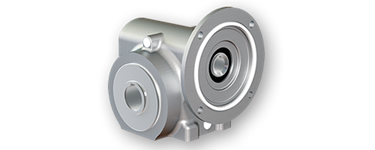Mobile:+86-311-808-126-83
Email:info@ydcastings.com
Innovative Techniques in Casting Aluminum Foam for Enhanced Lightweight Structural Applications
Aluminum Foam Casting An Innovative Approach to Lightweight Materials
Aluminum foam casting is an innovative manufacturing process that has gained significant attention in various industries due to its unique properties and applications. This advanced technique involves the creation of aluminum foams, which are cellular materials characterized by a high porosity and lightweight structure, making them ideal for diverse uses in automotive, aerospace, and construction sectors.
Understanding Aluminum Foam
Aluminum foam is created by introducing gas bubbles into molten aluminum, which creates a matrix of metal with numerous pores. The result is a material that is not only lightweight but also possesses a high strength-to-weight ratio. The aluminum foam structure typically consists of around 80-90% air, resulting in an extremely low density. This feature makes it highly attractive for applications where weight reduction is crucial without compromising structural integrity.
Manufacturing Process
The casting process involves several steps. The first stage is the preparation of the aluminum alloy, which is then melted and mixed with a foaming agent. This agent helps generate gas bubbles when heated. As the molten aluminum is stirred, the gas becomes trapped, leading to the formation of a foam. Once the desired foam consistency is achieved, the mixture is poured into molds, where it solidifies into the desired shape. Cooling and solidification are critical stages, as they determine the final properties of the aluminum foam.
An essential advantage of aluminum foam casting is its ability to create complex geometries and structures that are otherwise challenging to achieve with traditional materials. This flexibility allows for innovative designs that can meet specific strength requirements while maintaining a lightweight profile.
aluminum foam casting

Applications of Aluminum Foam
One of the most significant uses of aluminum foam is in the automotive industry. With the increasing emphasis on fuel efficiency and performance, vehicle manufacturers are turning to aluminum foam components to reduce weight without sacrificing safety. These foams can be utilized in crash structures, interior components, and even as sound insulation, offering multiple benefits in one material.
In aerospace, aluminum foam is appreciated for its impact resistance and energy absorption properties. Aircraft components made from aluminum foam contribute to overall weight savings, which can lead to lower fuel consumption and increased payload capacity. Additionally, the material's thermal insulation properties make it suitable for use in high-temperature applications, such as engine compartments.
The construction industry also benefits greatly from aluminum foam casting. The material’s lightweight nature, combined with its excellent energy absorption capacity, makes it a favorable option for protective barriers, noise insulation panels, and even architectural facades. The ability to produce lightweight panels simplifies logistics and installation while providing enhanced structural benefits.
Sustainability and Future Prospects
As industries move toward more sustainable practices, aluminum foam casting stands out due to its potential for recycling and reduced material usage. Aluminum itself is highly recyclable, and the production process can be optimized to minimize waste and energy consumption. With growing environmental concerns, the advancement of aluminum foam technology could lead to broader applications and increased adoption in sectors looking to improve their sustainability metrics.
In conclusion, aluminum foam casting represents a breakthrough in material science and engineering, offering a lightweight, strong, and versatile solution for a wide range of applications. As technology continues to evolve, we can expect to see even more innovative uses for aluminum foam, contributing to a more efficient and sustainable future across various industries.
-
Why Should You Invest in Superior Pump Castings for Your Equipment?NewsJun.09,2025
-
Unlock Performance Potential with Stainless Impellers and Aluminum End CapsNewsJun.09,2025
-
Revolutionize Your Machinery with Superior Cast Iron and Aluminum ComponentsNewsJun.09,2025
-
Revolutionize Fluid Dynamics with Premium Pump ComponentsNewsJun.09,2025
-
Optimizing Industrial Systems with Essential Valve ComponentsNewsJun.09,2025
-
Elevate Grid Efficiency with High-Precision Power CastingsNewsJun.09,2025











